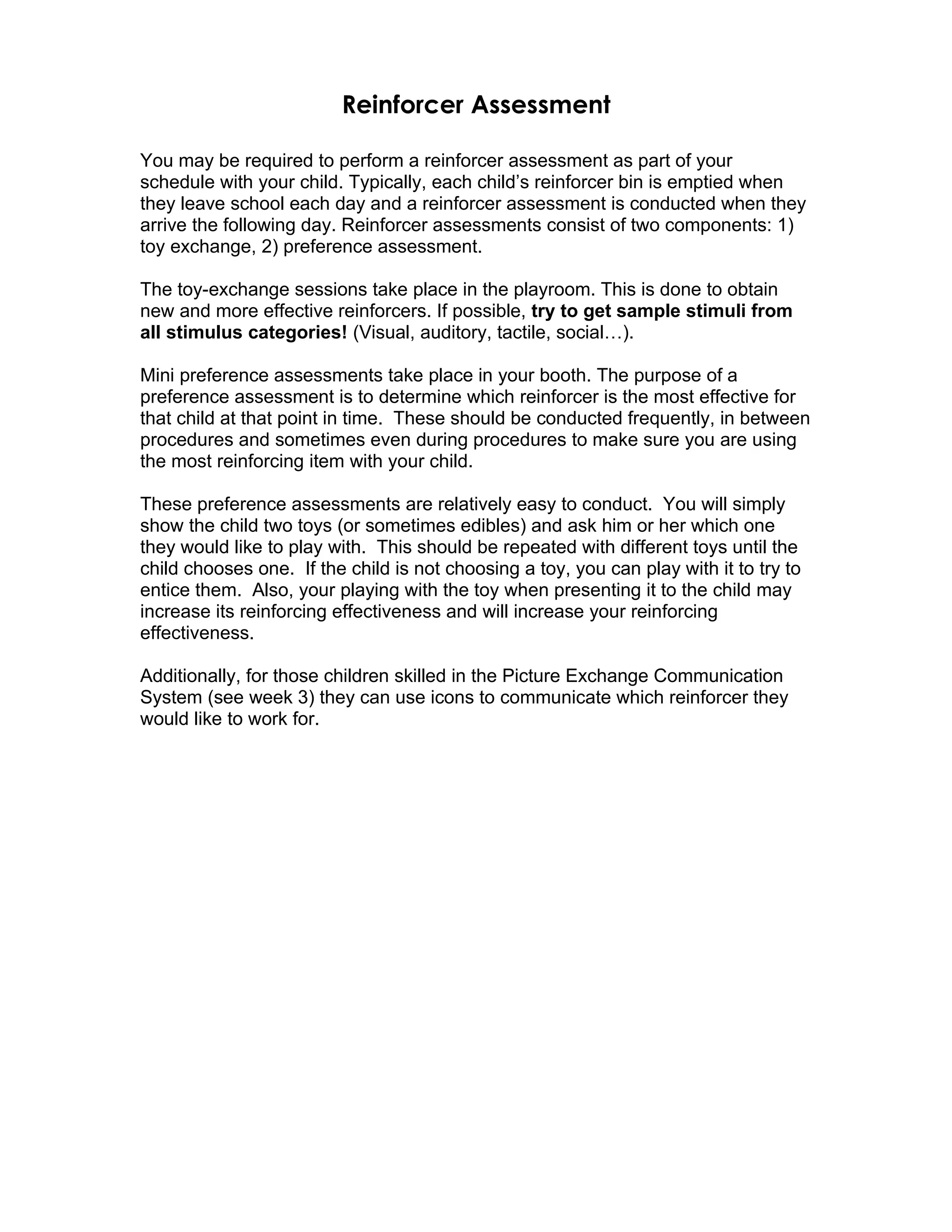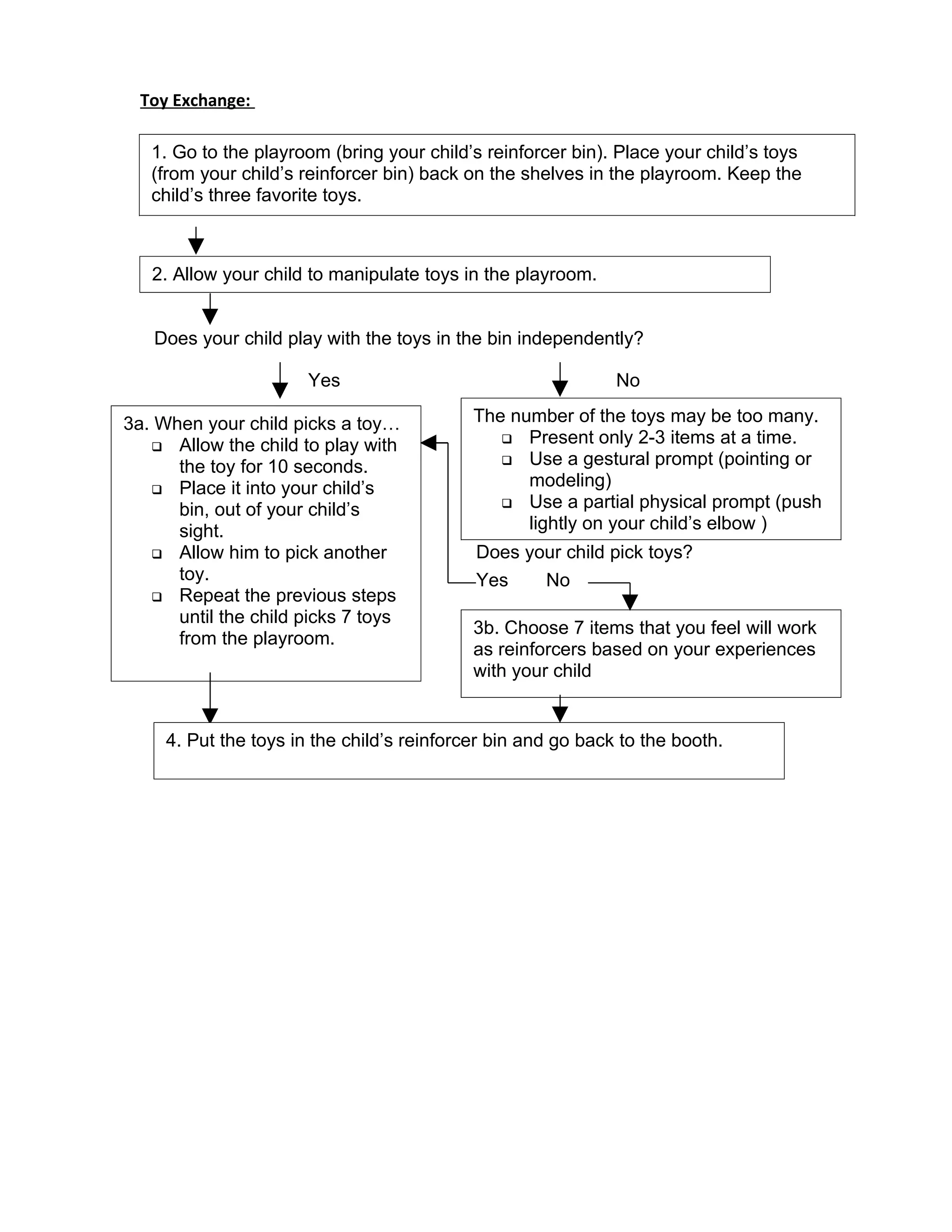The document discusses conducting reinforcer assessments with children which involve two components: 1) toy exchange and 2) preference assessments. The toy exchange takes place in the playroom to obtain new reinforcers and involves allowing the child to choose toys to keep in their bin. Mini preference assessments then take place in the booth to determine the most effective reinforcer for the child by having them choose between two toys. These assessments are easy to conduct and involve playing with toys to increase their reinforcing value when presenting them.

